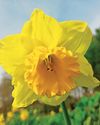
FEARSOME dragons, swift swans and leaping dolphins have decorated the prows of ships since antiquity. They embodied the spirit of the vessel, kept her safe in stormy weather and guided her home through rain and fog. The same held true across Britain, but it would be the Admiralty's decision in the early 17th century to allow the use of carved images of people, not only animals, that would see the flowering of the great age of the British naval figurehead.
In 1637, HMS Sovereign of the Seas was launched, featuring the largest and most costly figurehead in the history of the Royal Navy. A huge gilded figure of the Anglo-Saxon King Edgar mounted on a leaping horse and surrounded by vassals, it was said to have cost about $7,000 (close to $1 million today).
It may have appealed to gawking landlubbers, but the monumental figurehead made a less favourable impression on those who commanded the ship in action. Carved from elm or oak, it was incredibly heavy and compromised the seaworthiness of the vessel to the extent that, in 1796, the Admiralty tried to abolish figureheads altogether. However, it quickly became apparent that sailors regarded a ship without a figurehead as a lost and luckless craft and so a compromise was struck-henceforth, figureheads were carved from lighter timber, in particular yellow pine.
The size of the figurehead was conditioned by the tonnage of the ship and the sweep of the prow. Some were carved from one solid block, others from several blocks dowelled and glued together. In merchant craft, it was common to base a figurehead on a member of the owner's family or some important contemporary, such as William Gladstone or Benjamin Disraeli. In the Royal Navy, figures from classical literature-often, but not exclusively female-were a popular choice.
This story is from the {{IssueName}} edition of {{MagazineName}}.
Start your 7-day Magzter GOLD free trial to access thousands of curated premium stories, and 9,000+ magazines and newspapers.
Already a subscriber ? Sign In
This story is from the {{IssueName}} edition of {{MagazineName}}.
Start your 7-day Magzter GOLD free trial to access thousands of curated premium stories, and 9,000+ magazines and newspapers.
Already a subscriber? Sign In

Shaping the view
Shaping the view The Cart House, near Boddington, Northamptonshire A Modernist garden was exactly the right choice for this newly converted agricultural building

Snakes and snails and puppy-dog tales
Two kindred spirits made it their lives’ work to collect the smallest great poems of the world’s literature’, preserving for children the nursery rhymes, games and fairy tales no longer handed down by their mothers

The ghost of golden daffodils
The flower remains the national emblem of Wales, but how many today are aware of the true Welsh or Tenby daffodil

Kentish variety
Renovations, showjumping and archbishops lend character to two period properties

History triumphs over invention.
A brilliantly acted historical play about two world leaders squaring up to each other outstrips two over-produced versions of Greek mythology, despite their imported Hollywood stars

The lure of Venice
Vedute, the kaleidoscopic views of the maritime republic made popular by Canaletto, so enchanted the British that they not only collected them in large numbers, but soon began painting their own shimmering visions of the city

Power games and the battle for beauty
The Government’s plan to cover the countryside in ugly pylons with seemingly no regard for aesthetics must be vigorously challenged

Mad as a box of frogs
With genes that bear an uncanny resemblance to our own, our amphibious frog friends have aided medical advances and captivated many cultures with their mystical powers, discovers Ian Morton

Follow the yellow brick road
\"IN the 100th year since the death of the man who saved the daffodil I from extinction, the RHS hopes to safeguard the bulb from the perils of a changing climate.

Picasso's mystery lady
A MYSTERIOUS woman has been discovered A under underneath Picasso's Portrait of Mateu Fernández de Soto (1901).